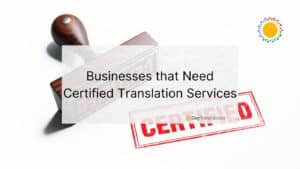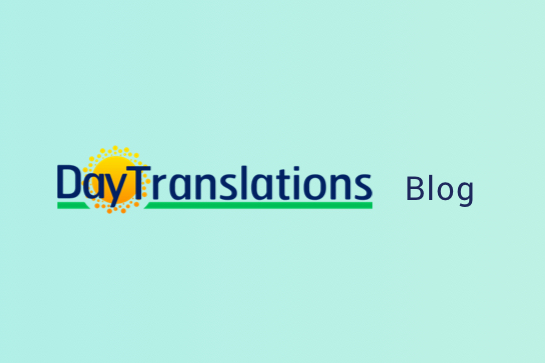If your healthcare site isn’t multilingual, you could be alienating your audience.
Many patients speak different languages or have limited English proficiency. Without information in their native languages, you risk misunderstandings and gaps in patient care.
Let’s take a closer look at how building a multilingual healthcare site can help you reach diverse communities and improve the patient experience. We’ll also explore common challenges and best practices — so you can make sure your translations are accurate, accessible, and culturally sensitive.
The Importance of a Multilingual Healthcare Site
Healthcare organizations should be accessible to all patients, regardless of their native language. Here’s why multilingual healthcare sites matter.
Global Audience and Accessibility
People who speak different languages need health information in a way that makes sense to them.
Providing multilingual content can help patients understand their health better and make informed decisions.
Regulatory and Ethical Considerations
Many countries have healthcare regulations to promote equal access to health services.
Multilingual websites help your organization stay compliant with rules like HIPAA in the US and promote fairness.
Common Challenges in Building Multilingual Healthcare Websites
Here are some speed bumps that may come up when building a multilingual healthcare website.
Language Nuances and Terminology
Translating healthcare terms can be tricky. Some medical phrases don’t have a direct translation into other languages.
Other terms sound similar (but aren’t) which can be confusing. For example, a term used for a specific health condition in English might sound similar in Spanish — but have a totally different meaning.
Cultural Context and Sensitivity
Healthcare content needs to respect cultural differences. What makes sense in one culture may not be relevant in another. For example, a cultural norm around family involvement in healthcare decisions can vary.
Localization vs. Direct Translation
A literal translation might not always make sense, especially in healthcare. Localization considers not just language but also cultural understanding.
It’s about making the content meaningful in each region. Whether that’s using region-specific health statistics, treatment options, or units of measurement. These require careful attention to ensure accuracy and clarity for a diverse audience.
For example, most countries use the metric system (millimeters, centimeters, and meters), while the U.S. uses the imperial system (inch, pound, and ton) for unit measurements.
Dates are also written in the format month/day/year in the U.S. and day/month/year in Europe, which can lead to confusion if not properly localized.
Best Practices for Translation and Localization in Healthcare
Follow these tips to build a multilingual healthcare site that global clients understand.
Work with Medical Translation Experts
Work with medical translation services provider who understand medical terminology. They can translate complex medical terms to make sure their meanings and instructions are correct.
For instance, when discussing specific medications like oral semaglutide for weightloss, only a trained translator can correctly interpret the name and dosage information in each language.
Use Consistent Terminology and Glossaries
Create a glossary of healthcare terms to promote consistent translations. Organize these by topic, such as “mental health terms” and “emotional health terms,” so they’re easier to find.
Supply this and a style guide to help translators follow the same rules.
Implement a Quality Assurance Process
Every translation should go through a quality check. Test for accuracy, readability, and cultural relevance to make sure the content is correct.
Always review the translated material before it’s published to make sure it makes sense in every language, and fits within the local cultural context.
Use a Content Management System (CMS) and Translation Plugins
CMS platforms like WordPress have plugins that support translation features.
This makes it easier to create and maintain content in multiple languages. Plugins can also help you update content and keep translations consistent across all versions of your website.
Use Secure WordPress Website Hosting
When you’re building a multilingual healthcare website on WordPress, use secure WordPress website hosting.
This is especially important for handling sensitive patient data, such as medical history or personal information, across different regions.
A secure platform helps protect your data and keeps it safe from potential security threats.
Choose Human Translation Over Automated
Automated translation tools can save time and money. But, they often miss the cultural and technical details needed in healthcare content.
Human translators offer a higher level of accuracy. Especially for sensitive topics like specific medical treatments or terms.
Design a User-Friendly Multilingual Experience
Build with the user in mind. Here are some specific ways to do that.
Intuitive Language Selection
Make sure it’s easy for users to switch between languages. A clear, simple language selection menu should be visible and easy to use without disrupting the flow of the site.
The goal is to offer a seamless experience for visitors, no matter which language they prefer.
Optimizing for Accessibility
Not all visitors can see or hear clearly, so make sure your site’s accessible to people with disabilities. Use readable fonts, provide audio options, and make sure that content can be easily navigated using screen readers.
Navigation and Search Features
Make it easy for users to find the health information they need.
The search function should work across all languages. And navigation should be simple, so users can quickly find relevant pages.
SEO and Marketing Considerations
Here’s what to consider when it comes to marketing and SEO.
Multilingual SEO Strategies
To reach patients across regions, optimize your site for different languages. Each language version should have its own set of SEO keywords.
You can also localize SEO strategies — like targeting specific health conditions or regional terms — to improve search rankings in different countries.
Localized Content Marketing
Localize your content by creating health articles or videos that appeal to each language group.
For example, content about weight loss treatments like oral semaglutide might be more popular in regions with higher obesity rates. Adjusting content to meet the needs and interests of your target audience will make the site more relevant and engaging.
Legal and Privacy Compliance Across Languages
Keep each country’s laws in mind.
Different countries have different data privacy laws. In the EU, for instance, GDPR laws require that you handle patient information carefully.
When you make a website that works in different languages, be clear about how the data is collected and protected in each language version.
Patients also need to fully understand consent forms. Especially when it comes to sensitive medical procedures or data collection, offer these documents in multiple languages so everyone knows their rights and the risks involved — no matter where they’re located.
Wrap up
Creating a multilingual healthcare website takes time and effort. But it’s an investment in providing better patient care and reaching a wider audience.
Work with experts, use the right tools, and continuously review your site to make sure it’s helping every patient.
PS: Need help with your multilingual marketing efforts? Connect with Day Translations. Our localization services are the most effective way to reach new global markets.
Author Bio:
Kelly Moster
Kelly Moser is the co-founder and editor at Home & Jet, a digital magazine for the modern era. She’s also the content manager at Login Lockdown, covering the latest trends in tech, business and security. Kelly is an expert in freelance writing and content marketing for SaaS, Fintech, and ecommerce startups.












Sorry, the comment form is closed at this time.